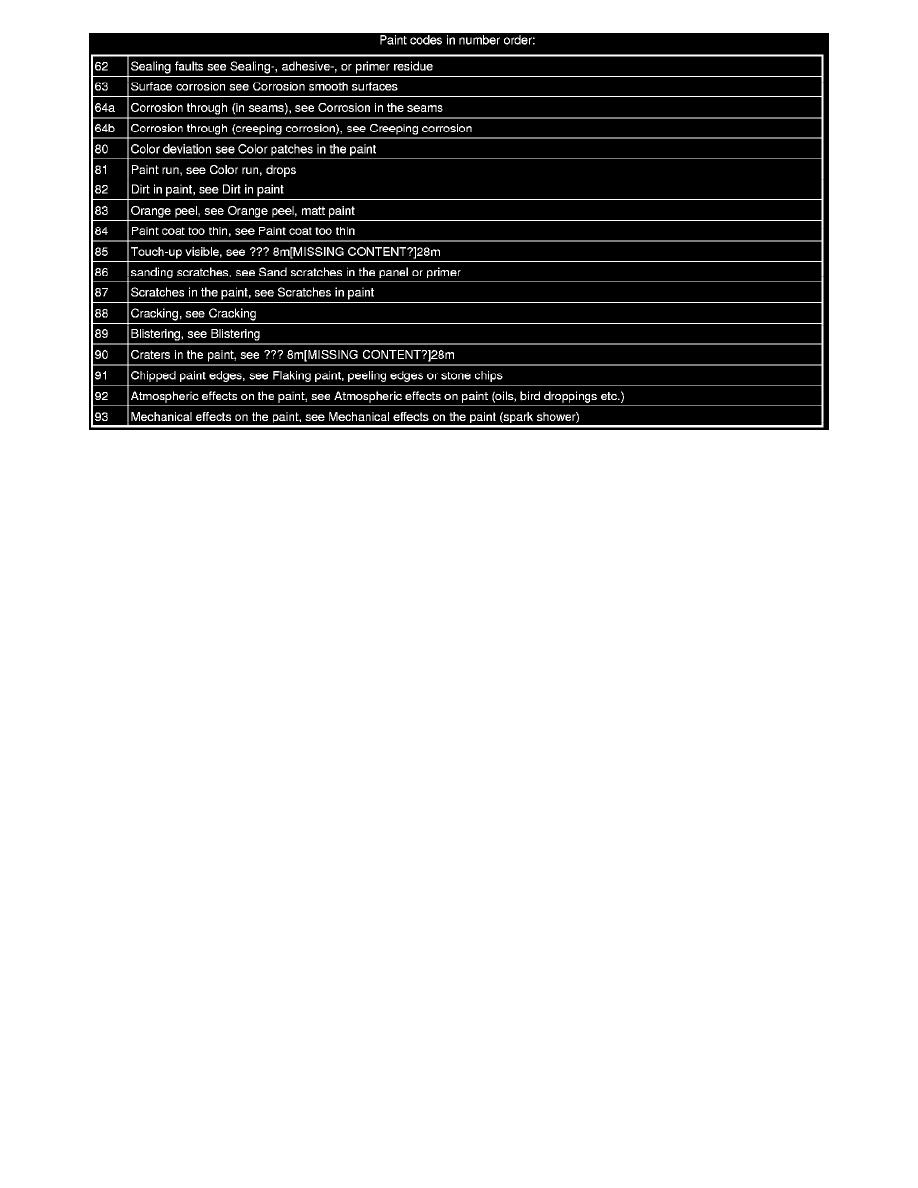C70 Coupe L5-2.3L Turbo VIN 53 B5234T3 (2001)

The following are examples of paint work defects.
Sealing-, adhesive-, or primer residue
Cause
Sealant applied too liberally. Deformation in the panel or sealant application.
Action
Remove the defective sealant. First apply primer, then new sealant and paint.
Corrosion smooth surfaces
Cause
Mechanical damage to the panel (stone chips).
Moisture and water damage to bare metal before painting
Fingerprints on bare metal.
Action
Stone chips that have not developed creeping corrosion are treated according to recommendations in the car instruction book.
If the damage is widespread or the cause is damp, water or fingerprints which occurred in the manufacturing process, sand back to bare metal and build
up the paint coats from the beginning.
Stone chips, from for example studded tires, occur frequently and are regarded by many customers to be due to defective paint. A good rule when
inspecting and discussing with customers is to compare the paint work in the stone chip risk zone with the headlamp lenses and the windshield etc.
Corrosion in the seams
Cause
Sub-standard welding, incorrect weld sealant, unsealed seams allowing moisture to seep in, incorrect adhesive.
Action
The seam is sandblasted and repainted. When the paint has dried treat the seam with rustproofing agent.
Treat the interior of the seam with penetrating rustproofing fluid.
Creeping corrosion
Cause
Creeping or filiform corrosion occurs when the painted surface is missing for some reason, stone chips or a damaged panel for example, and spreads if
the panel is not pre-treated to prevent this.
Action
Sanding the affected surface to bare metal and repainting.
